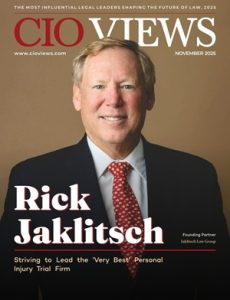It begins quietly, in the stillness before a class starts. A groom wipes down a gleaming coat, a rider adjusts a girth, the air carries the familiar scent of hay and polish. The scene could be from any decade. Yet beneath this calm, the sport is undergoing one of its most profound transformations — a reckoning over how horses are treated, seen, and spoken for.
Cameras, sensors, and social media have made invisibility impossible. Training sessions once hidden behind barn doors now appear online, dissected frame by frame. Welfare audits and veterinary data are increasingly public. What used to be a private dialogue between rider and horse is becoming part of a much larger conversation—one that is challenging equestrianism to redefine what ethical excellence really means.
A Shift in Sightlines
For decades, the sport relied on reputation and trust. A well-known trainer’s word carried weight; a respected barn was assumed to uphold the highest standards. But the rise of digital transparency has changed that equation.
Today, technology records what the eye misses. Motion sensors detect signs of fatigue long before lameness appears. Heart-rate monitors reveal stress in real time. Social platforms give spectators instant access to footage of both triumph and failure. What was once anecdotal is now evidence.
“It’s no longer enough to say you love your horses,” says one longtime show-jumping coach. “People expect proof that you’re caring for them well.”
That expectation, though uncomfortable for some, is also ushering in a new kind of accountability.
Ethics in Motion
Governing bodies have begun adapting to this new landscape. The Fédération Équestre Internationale (FEI) and national federations are expanding welfare codes and reviewing the use of technology in monitoring horse health. Data collection that once seemed invasive is now seen as essential.
The shift is philosophical as much as procedural. The conversation is moving from can a horse perform to should it. Trainers talk about “listening to the data,” but the best among them still insist that empathy comes first.
“Horses don’t speak our language,” says Ki-Juan Minors, the international rider and trainer who has become a voice for balance between progress and tradition. “So, when technology helps us listen better, we have to use it. But it’s still on us to respond with care, not just calculation.”
This tension—between measurement and morality—is at the heart of equestrianism’s evolution.
The Public Eye
Social media has accelerated the reckoning. Every clip from a warm-up ring, every slow-motion video of a whip or spur, can be shared, analyzed, and criticized within minutes. The visibility is relentless, and while it has exposed bad behavior, it has also made some riders fearful of misinterpretation.
The best ones, though, see it as necessary. “Transparency isn’t an enemy,” says Minors. “It keeps us honest.”
Some barns now livestream parts of their training, not as spectacle but as a statement of openness. Others invite welfare specialists to audit their practices. The cultural shift is slow, but it’s real.
What was once considered “soft” ethics has become a measurable skill. Riders are expected to understand physiology, recovery, and stress responses as deeply as they understand form and balance.
The Horse at the Center
For all the new technology and governance, the horse remains the story’s constant. They are the ones who bear the consequences of human ambition, and increasingly, they are shaping the conversation.
Advances in equine behavioral science show how horses communicate pain and discomfort through subtle gestures. These findings are changing how riders interpret resistance, fatigue, even silence. “Sometimes what looks like disobedience is really discomfort,” says one veterinary researcher. “The more we learn to read those cues, the more ethical the sport becomes.”
Modern welfare isn’t just about avoiding harm. It’s about creating conditions where horses can thrive physically and emotionally—an idea that is transforming how stables are built, how schedules are designed, and how success is defined.
A New Kind of Prestige
For a sport steeped in prestige, its future credibility may rest less on blue ribbons and more on transparency. Sponsors, fans, and regulators are all asking the same question: What does good care look like?
The answer, increasingly, involves proof—veterinary records, biometric data, open communication, and a visible commitment to kindness. The most respected riders are no longer just champions in the ring. They are ambassadors of trust.
And perhaps that is the quiet revolution: a redefinition of prestige that measures not only performance but the principles behind it.
The Evolution of Responsibility
Equestrianism has always celebrated partnership, but that partnership is being redefined. The horse is no longer viewed solely as a competitor, but as a sentient teammate whose wellbeing must come first.
“The horses give us everything,” Minors says. “The least we can do is make sure they’re heard.”
It’s a sentiment that carries weight in a sport learning to balance beauty with accountability. The elegance of riding has always depended on empathy; the difference now is that empathy is being measured, documented, and demanded.
Transparency may be uncomfortable, but it’s also a form of respect. It means the silent partner is finally being given a voice.





